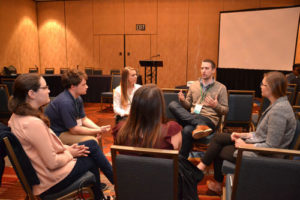Everyone who has taken a basic geography course know its Greek etymology as coined by Eratosthenes: geo, meaning “earth” and graphe, meaning to “describe.” For many centuries after, geography was synonymous with exploration and discovery, both of the physical/natural and cultural/human/social landscapes. While geographers past may have noted differences between the landscape dichotomy they practiced geography without worry of infringing on (now-prevalent) disciplinary boundaries. It wasn’t until the discipline’s so-called Quantitative Revolution in the mid-twentieth century that a visceral fracturing between geography’s physical and human spheres came to the forefront. Of course, as we have nowadays, each geographer past also had their own expertise area, but the difference between then and now is, they still continued to explore both physical and human aspects of the Earth, despite any potential inclination to one or the other.
Today, even while inter- multi- cross- and transdisciplinary “Centers” are created to teach students how to handle grand questions, specialization has become the norm in Academia. No longer can a doctoral dissertation study “Sweden’s Lapland” broadly speaking, for example. It must be more tightly focused. And not just on a specific region or topic, such as “Sweden’s Northern Mining Towns” or “Sweden’s Domestic Reindeer”. No. It must be almost hyper-specialized to something like “The Biogeographical Consequences of mining on a Southern Exposure Rhizoplaca Geographicum: a Case Study along the Southern Shoreline of Luossajärvi, Kiruna, Sweden”. Why? Even if much research has already been conducted in a region or on a topic, there’s often more that can be gleaned, learned, and analyzed without hyper-specializing. Sure, the researcher may have to bring-in or ask other colleagues for help on certain components, but a project centering on Sweden’s Lapland would still be worthy of a PhD.
A few decades ago, Hart (1982) argued in an AAG presidential address that regional geography was a geographer’s Highest Art. He made some very salient points that resonate with many graduate students even today, and especially with those who were initially drawn to geography because of its breadth. Yet Hart’s sentiments seem to have fallen on deaf ears, as Regional Geographers are in short supply (and demand), even in a time where geo-wizardry abounds and makes formidable weapons for regional geography. I will admit to being one of those students many years ago. And I still make my students (undergrads even) read Hart’s article every chance possible. It spoke to me as a student, and continues to provide guidance for me now, even as I progress through the ranks of the Academy, where I work hard to bridge the oft-too-apparent gap of physical and human geography.
But the road is long, the path arduous, and plagued with bandits who seem bent on robbing our wonderful discipline of its valuable catholic human-physical perspective. Sure, there are plenty of research opportunities focusing on the so-called Human-Environment Interface (HEI) and Sustainability – areas geographers have studied for centuries, but under our own heading, “Geography”, not some buzz-word. Why relegate a broad-reaching discipline such as geography to the minutiae of hyper-specialization? Why castigate those (students included) who want to be “Geographers” in the traditional/romantic/classical sense – those that are willing to and can work across perceived divides?
Some may see this as an old, antiquated view of the discipline, but I believe otherwise. This Traditional Geography remains a vibrant light for the field. It has merit. It has power. I have seen it excite students, colleagues, and even myself. Indeed, its importance has been echoed by many great geographers other than Hart – both physical- and human-focused folks – both past and present (AGS 1915, Harrison et al. 2004, Inkpen and Wilson 2013), including Harden’s (2012) recent Presidential Address.
Geography’s ability to reach across its own apparent disciplinary divide should be embraced, touted, and held high for others to see, instead of relegating its hopeful practitioner to hyper-specialization, discrimination by colleagues for not being specifically-focused in one “camp” or the other, and/or being penalized when it comes to research opportunities, recognition of achievements, and advancement up the ranks. No other discipline claims to describe the Earth, and this facet of Geography’s original character should be something for which the discipline is once again known, something for which it should keep being known. Otherwise we, as Geographers, may lose our foundation, even our very identity. Embracing your origination, your roots so to speak, can enhance not only who you are, but what you do. Even if you decide its path is not for you, or can’t fathom why someone would want to follow that approach, accept the Traditional Geographer. Understand that they will make valuable contributions to the discipline. And for those that want to attempt tackling Geography in the traditional manner, be bold and persevere. Though it may take some time, you will eventually find your place. Geographers are good at that.
Casey D. Allen
Associate Professor
University of Colorado Denver
Fulbright Scholar, Hashemite Kingdom of Jordan (2015-16)
casey [dot] allen [at] ucdenver [dot] edu
Twitter: @caseallen
References
AGS. 1915. Memorial Volume of the Transcontinental Excursion of 1912 of the American Geographical Society of New York. New York, NY: The American Geographical Society of New York.
Harden, C. P. (2012) Framing and reframing questions of human–environment interactions. Annals of the Association of American Geographers, 102, 737-747.
Harrison, S., D. Massey, K. Richards, F. J. Magilligan, N. Thrift & B. Bender (2004) Thinking across the divide: perspectives on the conversations between physical and human geography. Area, 36, 435-442.
Hart, J. F. (1982) The Highest Form Of The Geographer’s Art. Annals of the Association of American Geographers, 72, 1-29.
Inkpen, R. J. & G. Wilson. 2013. Science, Philosphy, and Physical Geography. Abingdon: Routledge.
 Greg Elmes, professor emeritus in the Department of Geology and Geography at West Virginia University was recently honored with a Lifetime Achievement award by the West Virginia Association of Geospatial Professionals for his dedication to the study and promotion of geographic information systems (GIS).
Greg Elmes, professor emeritus in the Department of Geology and Geography at West Virginia University was recently honored with a Lifetime Achievement award by the West Virginia Association of Geospatial Professionals for his dedication to the study and promotion of geographic information systems (GIS). CJ Burka is a rising senior at Hofstra University triple majoring in Geography, Political Science and Global Studies. She is a second year fellow at the Michael D’Innocenzo Center for Civic Engagement and an office aid in the Department of Global Studies and Geography. She is also the president of Get Global, an organization promoting international diversity on campus as well as being a Global Mentor, helping international students prepare for their time at Hofstra.
CJ Burka is a rising senior at Hofstra University triple majoring in Geography, Political Science and Global Studies. She is a second year fellow at the Michael D’Innocenzo Center for Civic Engagement and an office aid in the Department of Global Studies and Geography. She is also the president of Get Global, an organization promoting international diversity on campus as well as being a Global Mentor, helping international students prepare for their time at Hofstra. Nina Feldman is a senior pursuing a B.S. in environmental studies with a minor in geographic information systems at George Washington University. Her interests include art, geography and graphic design. After graduation she wants to work for an organization where she can utilize her GIS skills to help mitigate environmental concerns and gain further experience before pursuing her M.A. in geography.
Nina Feldman is a senior pursuing a B.S. in environmental studies with a minor in geographic information systems at George Washington University. Her interests include art, geography and graphic design. After graduation she wants to work for an organization where she can utilize her GIS skills to help mitigate environmental concerns and gain further experience before pursuing her M.A. in geography.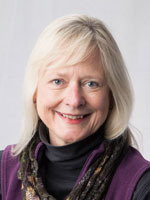
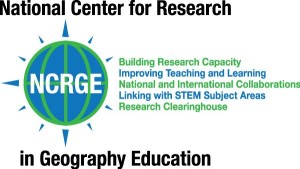
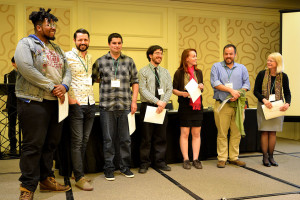
 AAG Now Accepting Entries for the 2015-2016 edition of the Guide
AAG Now Accepting Entries for the 2015-2016 edition of the Guide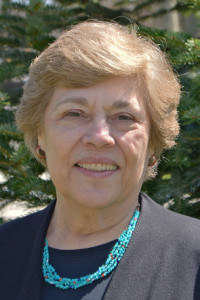 Donna Peuquet named 2016 UCGIS Fellow
Donna Peuquet named 2016 UCGIS Fellow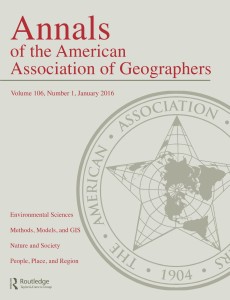 May 2016 Issue of the ‘Annals of the AAG’ Now Available
May 2016 Issue of the ‘Annals of the AAG’ Now Available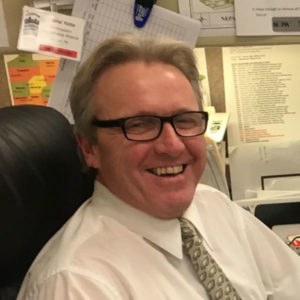 What was your favorite class in K-12? My favorite class from K-12 was Geography in 1969. I only had geography in the fourth grade. The teacher was explaining what a globe was and I was fascinated by the sphere shape. When I held the globe I said, “Look I have the whole world in my hands.” That was my introduction to the world and everything in it. The subject resonated with me from that very moment.
What was your favorite class in K-12? My favorite class from K-12 was Geography in 1969. I only had geography in the fourth grade. The teacher was explaining what a globe was and I was fascinated by the sphere shape. When I held the globe I said, “Look I have the whole world in my hands.” That was my introduction to the world and everything in it. The subject resonated with me from that very moment.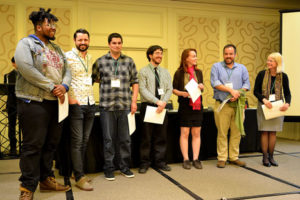
 For me, one of the best sessions at our annual meeting reported the results of our first membership survey. A stellar crew, including past presidents Julie Winkler and Mona Domosh, assembled to present a few of its key findings. Alas, it was not terrifically well-attended (Lunch time. San Francisco. Who doesn’t want to eat?) so I will follow up in this column and in next month’s with a few findings and an explanation about how Council is using these data to make our organization stronger.
For me, one of the best sessions at our annual meeting reported the results of our first membership survey. A stellar crew, including past presidents Julie Winkler and Mona Domosh, assembled to present a few of its key findings. Alas, it was not terrifically well-attended (Lunch time. San Francisco. Who doesn’t want to eat?) so I will follow up in this column and in next month’s with a few findings and an explanation about how Council is using these data to make our organization stronger. The survey showed that satisfaction peaks for AAGers in years three to 10 of membership. Thus, we need to work to hold on to mid-career members. McKinley summarized this situation as, “Understanding the challenges, identifying solutions, and developing resources focused specifically on this key mid-career member segment is an important way to continue to ensure engagement and high-levels of satisfaction throughout the career lifecycle.” I have written before about mid-career faculty issues; we are compelled by this result to think about ways to build involvement and satisfaction in this key demographic in our organization.
The survey showed that satisfaction peaks for AAGers in years three to 10 of membership. Thus, we need to work to hold on to mid-career members. McKinley summarized this situation as, “Understanding the challenges, identifying solutions, and developing resources focused specifically on this key mid-career member segment is an important way to continue to ensure engagement and high-levels of satisfaction throughout the career lifecycle.” I have written before about mid-career faculty issues; we are compelled by this result to think about ways to build involvement and satisfaction in this key demographic in our organization.